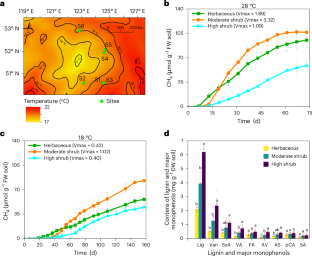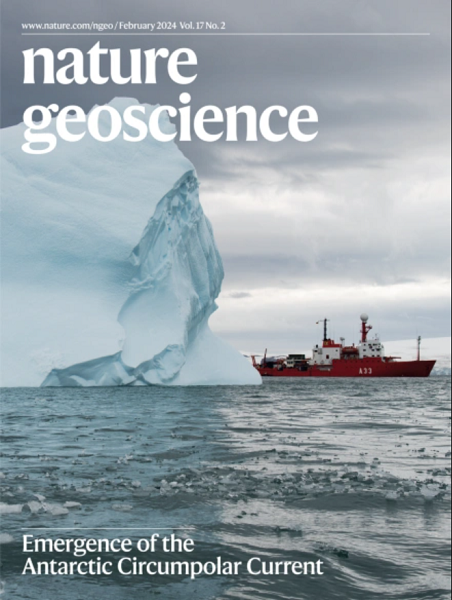Methane production from lignin in anoxic peatland
IF 16.1
1区 地球科学
Q1 GEOSCIENCES, MULTIDISCIPLINARY
引用次数: 0
Abstract
Lignin is a natural plant polymer that accounts for about one-third of the organic carbon in the biosphere. Global warming has led to shrub encroachment and increased lignin input into peatlands. Generally, lignin is recalcitrant to microbial degradation in anoxic environments. Here we report methane production from lignin and its constituent monophenols in a flooded peatland in China based on microcosm experiments. Methane production was higher in the moderate shrub-covered peatland soils that have greater lignin contents compared with those of herb-covered soils. Adding lower contents of lignin and its monophenols promoted methane production of herb soil microcosms, and lignin contributed approximately 1.2–14.2% of the total methane emissions. Isotope tracing and dynamic metabolomic analyses revealed that the methoxy group of vanillin was first converted to methane, and then the aromatic ring carbons were fermented into CO2, acetate, propionate and (iso)butyrate. Lignin and its monophenols enriched the methylotrophic methanogens Methanomassiliicoccus and Methanosarcina, suggesting their involvement in methoxydotrophic methanogenesis. We suggest that lignin should not be overlooked as a source of methane in peatlands, especially given increasing shrub encroachment under global warming. Anaerobic microbial degradation of lignin and derived monophenols enhances methane production in an anoxic peatland in China, according to soil microcosm experiments and metabolomic analyses.


缺氧泥炭地木质素产甲烷
木质素是一种天然植物聚合物,约占生物圈有机碳的三分之一。全球变暖导致了灌木的入侵和泥炭地木质素的增加。一般来说,木质素在缺氧环境中不易被微生物降解。本文报道了中国淹水泥炭地木质素及其单酚类化合物产生甲烷的微观实验。木质素含量较高的中等灌丛覆盖泥炭地土壤甲烷产量高于草本覆盖土壤。添加较低含量的木质素及其单酚促进了草本土壤微生物甲烷的产生,木质素对甲烷总排放量的贡献约为1.2 ~ 14.2%。同位素示踪和动态代谢组学分析表明,香兰素的甲氧基首先被转化为甲烷,然后芳香环碳被发酵成CO2、醋酸盐、丙酸盐和异丁酸盐。木质素及其单酚类物质富集了甲氧营养型产甲烷菌Methanomassiliicoccus和Methanosarcina,表明它们参与了甲氧营养型产甲烷。我们认为木质素作为泥炭地甲烷的一个来源不应被忽视,特别是在全球变暖下灌木入侵增加的情况下。
本文章由计算机程序翻译,如有差异,请以英文原文为准。
求助全文
约1分钟内获得全文
求助全文
来源期刊

Nature Geoscience
地学-地球科学综合
CiteScore
26.70
自引率
1.60%
发文量
187
审稿时长
3.3 months
期刊介绍:
Nature Geoscience is a monthly interdisciplinary journal that gathers top-tier research spanning Earth Sciences and related fields.
The journal covers all geoscience disciplines, including fieldwork, modeling, and theoretical studies.
Topics include atmospheric science, biogeochemistry, climate science, geobiology, geochemistry, geoinformatics, remote sensing, geology, geomagnetism, paleomagnetism, geomorphology, geophysics, glaciology, hydrology, limnology, mineralogy, oceanography, paleontology, paleoclimatology, paleoceanography, petrology, planetary science, seismology, space physics, tectonics, and volcanology.
Nature Geoscience upholds its commitment to publishing significant, high-quality Earth Sciences research through fair, rapid, and rigorous peer review, overseen by a team of full-time professional editors.
 求助内容:
求助内容: 应助结果提醒方式:
应助结果提醒方式:


